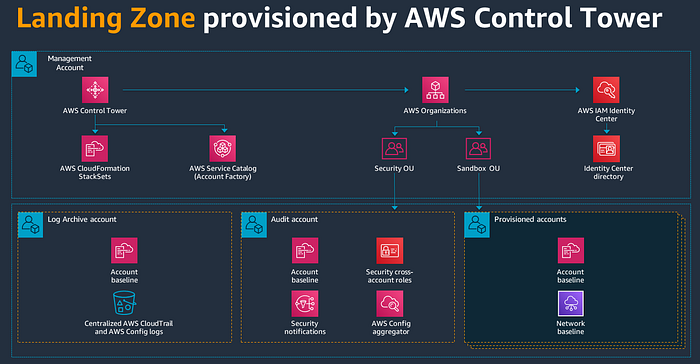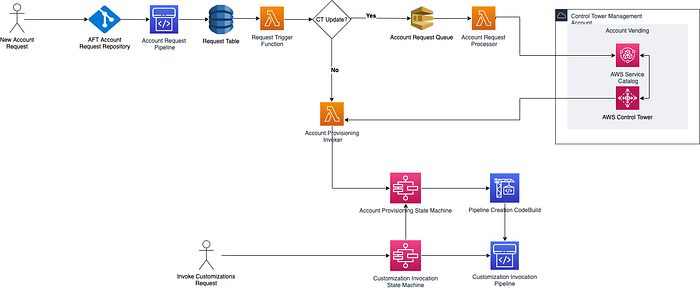As organizations scale on Amazon Web Services (AWS), they quickly adopt a multi-account strategy for better security, governance, and cost management. While effective, managing dozens or hundreds of accounts manually becomes an operational nightmare — a problem AWS Control Tower was designed to solve.
AWS Control Tower is a fully managed service that provides the easiest way to set up and govern a secure, multi-account AWS environment, known as a Landing Zone, based on prescriptive best practices. It essentially automates the setup and continuous enforcement of your security and compliance policies across your entire AWS Organization.
The Core Challenge: "Scale vs. Control" in Cloud Governance
The primary challenge for organizations operating a multi-account AWS environment lies in balancing two critical needs: agility for developers and centralized control for security teams.

The Efficient Solution: Control Tower's Blueprint and Governance
AWS Control Tower orchestrates several underlying AWS services (like AWS Organizations, AWS IAM Identity Center, and AWS Config) to deliver a consistent, secure foundation.

1. Automated Landing Zone Setup
Control Tower deploys a Landing Zone, which is a well-architected, multi-account structure aligned with AWS best practices.
- Structure: It establishes core organizational units (OUs), including the Security OU, which houses two critical accounts:
- Log Archive Account: Centralized, immutable storage for all AWS CloudTrail and AWS Config logs across the entire organization.
- Audit Account: Dedicated access for security and audit personnel to review logs and resources without granting access to production workloads.
- Identity: It automatically configures AWS IAM Identity Center (successor to AWS SSO) for federated access, ensuring your employees use a single corporate credential to access all governed accounts based on their job function.
2. Guardrails: The Automated Governance Engine
The most impactful feature of Control Tower is its use of Guardrails, which are high-level, continuous governance rules applied across your OUs. These automatically enforce policies without custom scripting.

3. Account Factory
The Account Factory allows users (developers, DevOps engineers) to provision new, pre-configured AWS accounts that are already compliant and governed by the Guardrails. This enables self-service provisioning at scale without security compromise, dramatically accelerating developer agility.

Real-World Use Case: Global SaaS Provider
A large SaaS company needs to onboard 10 new clients per week. Each client requires their own dedicated, isolated AWS account to meet strict security and data separation contracts.
- Challenge: Manually configuring 10 new, perfectly secured accounts every week is resource-intensive and prone to human error, leading to delays and inconsistent security baselines.
- Control Tower Solution: The company leverages the Account Factory to automate the creation of a new client account.
- The account is instantly placed under a Client OU.
- Preventive Guardrails (e.g., disallowing internet gateways or cross-region replication) are automatically enforced by SCPs applied to the OU.
- Detective Guardrails start continuously monitoring for any configuration drift (e.g., checking for unencrypted databases).
- Impact: 50% productivity improvement in account creation and onboarding, with guaranteed compliance from day one. This high level of governance is critical for achieving and maintaining certifications like ISO 27001 and SOC 2.
By abstracting away the heavy lifting of multi-account orchestration, AWS Control Tower allows enterprises to scale rapidly while ensuring security, compliance, and governance remain at the forefront. It shifts the focus from building the compliance framework to building the business.
#AWS #CloudGovernance #AWSControlTower #CloudSecurity #DevOps #LandingZone #MultiAccount #FinTech #SaaS #CloudComputing
